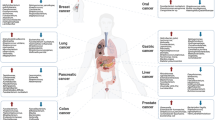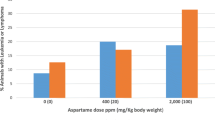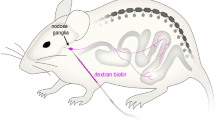Abstract
Glucocorticoids, such as dexamethasone, induce amiloride-sensitive Na+ conductances in rat distal colon epithelium. The activity of these conductances diminishes from the surface to the base of the crypt whereas cAMP-stimulated Cl–secretion decreases from the crypt base to the surface. These gradients are likely to be perturbed during carcinogenesis. We therefore determined the magnitude of Na+ and Cl–conductances in colonocytes isolated from normal and carcinogen-treated rats. Colon carcinogenesis was induced by injection of dimethylhydrazine (DMH) (18 mg/kg) for 5 weeks. Before sacrifice animals were treated for 3 days with dexamethasone. Colonocyte populations from the surface to the crypt base (C1–C5) were harvested from the distal colon by a Ca2+-chelating procedure. The activity of Na+ conductances was determined by uptake of 22Na+ by surface and crypt colonocyte populations and by membrane vesicles in the presence and absence of 10 μM amiloride. In control rats Na+ conductance was highest in surface colonocytes and absent in the crypt base. As early as 2 weeks after initiation of DMH treatment amiloride-inhibited Na+ uptake was virtually absent in the upper crypt. Transcriptional assessment of the α-, β- and γ-subunits that constitute the epithelial Na+ channel revealed that DMH treatment reduces the expression of β-subunit mRNA. We then examined 36Cl–efflux from isolated colonocytes of normal and carcinogen-treated rats in response to forskolin (0.01 mM). Forskolin induced a marked rise in cAMP in lower crypt cells concomitant with a significant stimulation of 36Cl–efflux. Intracellular cAMP increased in upper crypt cells in response to forskolin without an increase in 36Cl–efflux. By contrast, upper crypt colonocytes from DMH-treated rats showed forskolin-stimulated efflux beginning 4 weeks after initiation of treatment. We conclude that induction of Na+ conductances by glucocorticoids is inhibited during the early stages of chemical carcinogenesis due to lack of induction of the β-subunit of the channel. By contrast, Cl–transport is stimulated both in surface and lower crypt cell compartments during different stages of chemical carcinogenesis.
Similar content being viewed by others
Author information
Authors and Affiliations
Additional information
Received: 26 March 1997 / Received after revision: 20 June 1997 / Accepted: 7 July 1997
Rights and permissions
About this article
Cite this article
Fraser, G., Portnoy, M., Bleich, M. et al. Characterization of sodium and chloride conductances in preneoplastic and neoplastic murine colonocytes. Pflügers Arch 434, 801–808 (1997). https://doi.org/10.1007/s004240050468
Issue Date:
DOI: https://doi.org/10.1007/s004240050468




